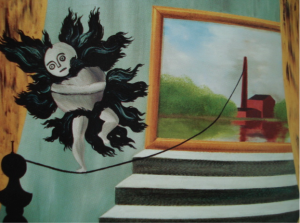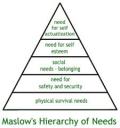About 116 people registered to attend the Alpine Rendezvous this year – 10 workshops, almost every country in Europe represented and several attendees from outside Europe.
Report from Workshop 1: Orchestration
How do teachers orchestrate events inside and outside the classroom?
First model – started with a very dry mathematical model. How does the teacher manage their workload? This only applies if you think of the classroom as a shoebox.
Second model – takes the context and the students into account.
Third model – include meaning making.
Fourth model – take emotions and feelings into account (emotional intelligence of teachers and learners).
Fifth model – include identity as a driver of learning.
Grand Challenge: Link with the emotions of teachers. Make teachers happy throughout their working lives – and still believing in and expecting things from all their students.
Workshop 2: Data analysis and interpretation for interactive LEs (DAILE13)
Mainly computer scientists
Paper along the lines of analytics for intelligent tutoring systems, and also to support decision-making for different actors
Grand challenge: Interactive learning analytics: from accountability to ‘opportunity management’ in a multi-actor perspective
Moving beyond the focus on learners and including data from other actors. Want to use analytics in a socially responsible way. Consider the interdependence of analytics feedback on decisions and ultimately on power relations and empowerment. Make human responsibility explicit. Support reflection and openness.
Grand challenge: towards adaptive and adaptable learning in massive online courses
Workshop 3: (Our workshop) – Teaching Inquiry into Student Learning, Learning Design and Learning Analytics
Grand challenge: Empower the future teacher
Workshop 4: Smart Cities
Concerned with well-being of people in those cities. A way of optimising resources, including time. Smartness is different from country to country. The UK doesn’t care much about environment, Finland scores very high on governance. So there are cultural issues involved.
This can become a consumer approach – in which citizens consume the smart cities that have been developed through them. An alternative approach would be a bottom-up approach, achieved with and through learning
Should we talk about a smart city or about a smart territory? The most important thing seems to be the space of flux around the city – for example the commuter belt.
They used Villard as a case study including interviews and tour. Identified perceived needs and came up with actions such as a Vercors card giving access to benefits and facilities in the area, learning through space gamification, learning about Villard life by monitoring relevant traces and emergent behaviours.
Multidimensional monitoring embedded into the learning (learning analytics aspect).
Grand Challenge: International observatory on smart city learning. To raise awareness and attract people to get involved.
Grand Challenge: Promote smart city learning and people-centred smart cities / territories
Workshop 5: Crisis and response
Some of the questions that emerged: Political and pedagogic implications of the interpenetration of real and virtual worlds. How are digital cultural resources distributed? What are the candidates for a mobile, highly networked pedagogy? Investigate and advocate for pedagogies of meaning making, identity formation, contingency and (resilience to) provisionality
Grand challenge: How can TEL contribute to resolving educational inequalities?
Democratise access to learning through digital means. Need a more rigorous identification of the role TEL developments are playing in the systemic inequalities. Europe has some of the historically most democratic and emancipatory education systems in the world.
Crisis of legitimacy in the face of open online education
Can we significantly alleviate inequalities of educational outcome?
Examine the big picture of digital capital and capability across Europe.
Workshop 6: Technology support for reflecting on experiences and sharing them across contexts
If you search ‘technology enhanced learning’ and ‘vocational’ on Google you don’t get many hits.
Vocational learning is dual centre – you have your workplace and you have your classroom. How can what you learn in these two contexts be integrated?
The partial solution is called the Erfahrraum (experience space). This has collection, validation and exploitation phases, bringing together practical and conceptual knowledge.
Workshop 7 (Coming up): Challenges of analysing multi-scale and temporal data
Existing research methods to not fully utilise the temporal information embedded in the data which reduces their explanatory power and limits the validity of their conclusions.

